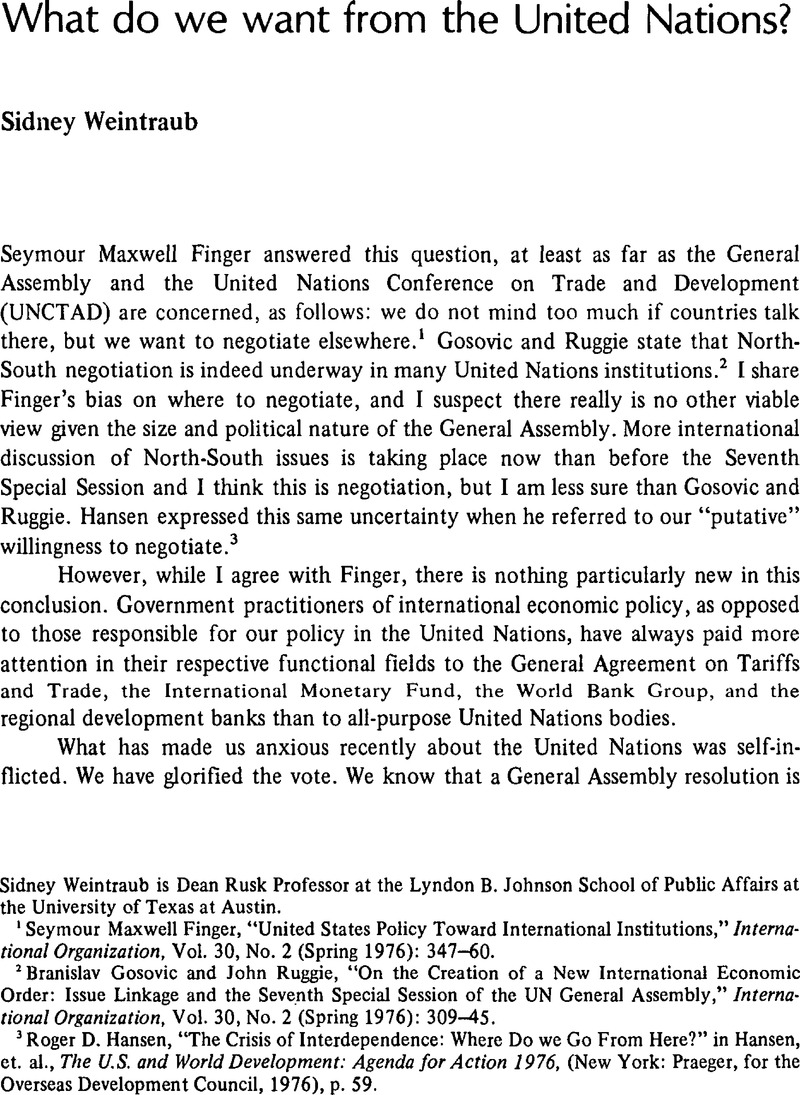Article contents
What do we want from the United Nations?
Published online by Cambridge University Press: 22 May 2009
Abstract

- Type
- Symposium: New Directions for International Institutions
- Information
- Copyright
- Copyright © The IO Foundation 1976
References
1 Finger, Seymour Maxwell, “United States Policy Toward International Institutions,” International Organization, Vol. 30, No. 2 (Spring 1976): 347–60CrossRefGoogle Scholar.
2 Gosovic, Branislav and Ruggie, John, “On the Creation of a New International Economic Order: Issue Linkage and the Seventh Special Session of the UN General Assembly,” International Organization, Vol. 30, No. 2 (Spring 1976): 309–45Google Scholar.
3 Hansen, Roger D., “The Crisis of Interdependence: Where Do we Go From Here?” in Hansen, et al. , The U.S. and World Development: Agenda for Action 1976, (New York: Praeger, for Overseas Development Council, 1976), p. 59Google Scholar.
4 “A New United Nations Structure for Global Economic Cooperation,” Report of the Group of Experts on the Structure of the United Nations System, United Nations document E/ AC.62/9, 28 May 1975.
5 Ambassador Scranton, in a press interview on March 15, 1976, said that his style and Moynihan's were different, “but it does not mean that we have any disagreements about basic American policy.” He later cited some areas, such as the need to use the aid punishment weapon “sparingly,” that really were disagreements.
6 See the statement of March 18, 1976 by Assistant Secretary of State for International Organization Affairs, Samuel W. Lewis, before the Senate Foreign Relations Committee. This statement is a mixture of toughness (it will no longer be inexpensive for countries to “attack … the basic good faith of the United States”) and moderation (it is not in the American interest to cut off US bilateral assistance to all countries which supported the Zionism resolution-emphasis mine).
7 Bergsten, C. Fred, “Interdependence and the Reform of International Institutions,” International Organization, Vol. 30, No. 2 (Spring 1976): 361–72CrossRefGoogle Scholar.
8 January 18, 1976.
9 Yeselson, Abraham and Gaglione, Anthony, A Dangerous Place (New York: Viking Press, 1974)Google Scholar.
- 1
- Cited by


